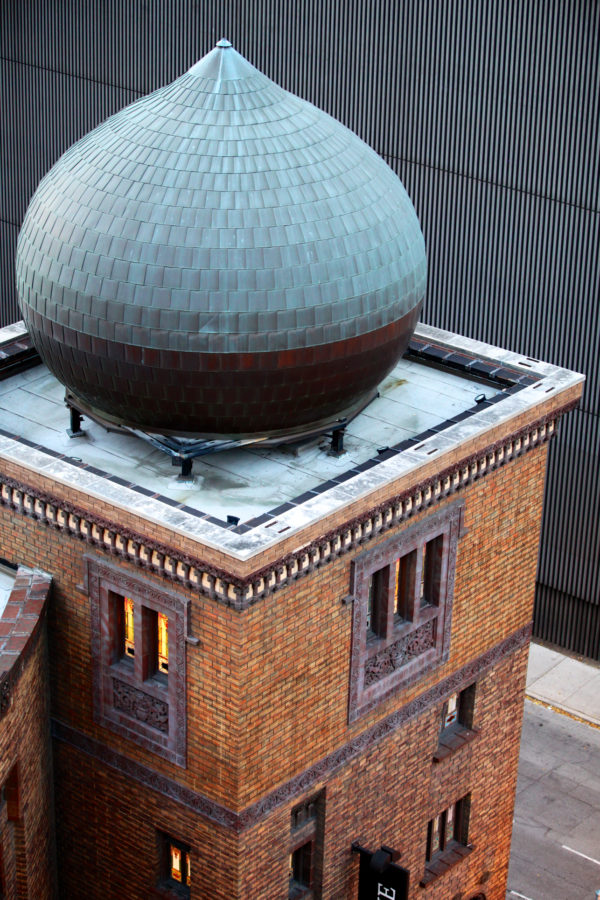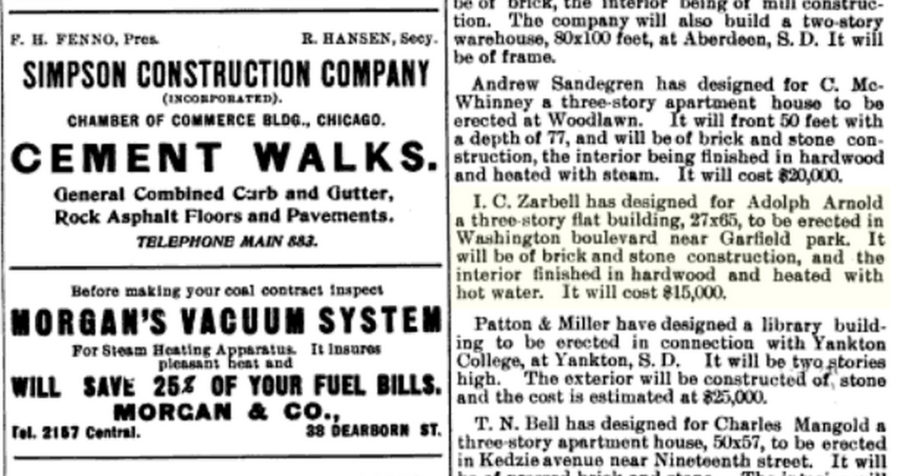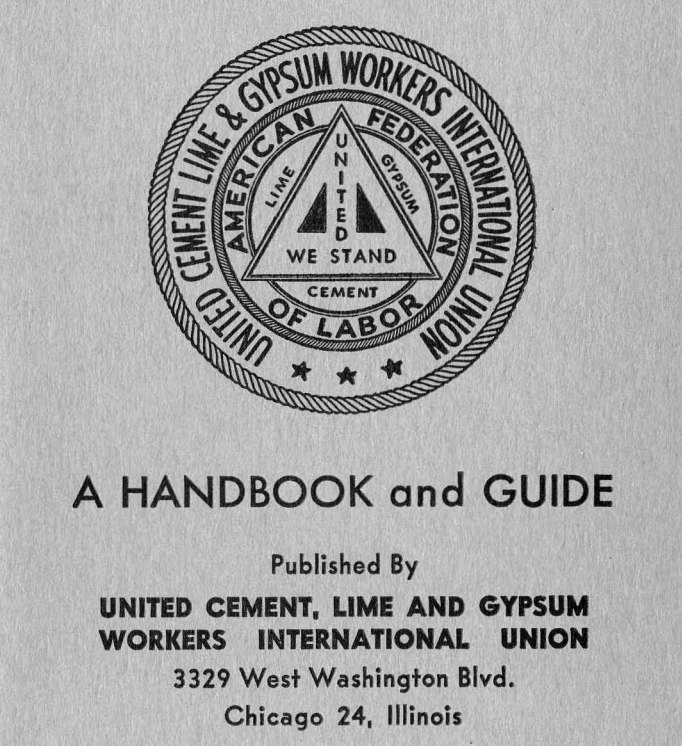Uncertain Future for a Vacant Gothic Mansion Built for Co-founder of Schwinn Bicycle Company [UPDATED]

3329 W. Washington. John Morris/Chicago Patterns
UPDATE 11/18/2015
After facing an almost certain demolition for the past several months, the Arnold-Crowe House has been sold to owners who are planning to rehab and restore the long vacant house. The previous owner, Peter Creig Toalson, expressed a strong desire to put the home in good hands when his own restoration efforts ran into difficulty.
Lisa DiChiera, of Landmarks Illinois, and Matt Cole, of Neighborhood Housing Services of Chicago, are assisting the new owners in identifying tools and resources to mend the historically notable structure. The house is on the 2015 Landmarks Illinois Most Endangered Places List.
We’ll continue to update this article with the latest developments.
—
One of Chicago’s most distinctive houses resides in East Garfield Park. Possessing elements of Gothic and Moorish Revival and a uniquely shaped tower, it is unlike any other house in the city.
Beyond architectural details, the house is special because two noteworthy Chicago residents had once lived there: the co-founder of Schwinn Bicycle Company and, later, a State’s Attorney and ally of infamous Chicago mayor Bill Thompson.

John Morris/Chicago Patterns
Gothic and Moorish Styles
A steeply pitched front gable with lancet window, a dramatic tower and a decorative trim are clues to the structure’s Gothic Revival origins. An articulated onion dome cupola reveals the Moorish Revival influence.

Tower and onion dome cupola on the Moorish Revival-styled Medina Temple. John Morris/Chicago Patterns
Although smaller in size, it is similar to the tower and cupola on Medina Temple downtown.

Tower and onion dome cupola. John Morris/Chicago Patterns
The Unusually Prominent Tower
The current owner speculates the large tower was the result of the original owner wanting an unobstructed view of Garfield Park.

John Morris/Chicago Patterns
It’s not on a corner lot, but the park is easily within view from inside the tower.

Building permit from 1904 Economist showing construction permit for 1490 W. Washington (now 3329 W. Washington)
Build year details, from the Cook County Assessor’s office, are often inaccurate, and the 1960 build date for this house is obviously wrong.
I was able to find the true build date (1904) by looking for the home’s pre-1909 [PDF] address (1490 Washington) in building permit records.

Ignaz Schwinn (front left) and Adolph Arnold (front right) in Schwinn’s prototype horseless carriage. From the book Schwinn Bicycles.
Built for the Co-founder of the Schwinn Bicycle Empire
The process of locating the correct build date revealed something far more interesting: the original owner of the house was Adolph Arnold, co-founder of Schwinn Bicycle Company.

Arnold, Schwinn & Co. letterhead from 1900
More about Adolph Arnold and Ignaz Schwinn:
In 1895, during the midst of a national bicycle craze, Ignaz Schwinn (who arrived in Chicago from Germany in 1891) and partner Adolph Arnold (a Chicago meat industry veteran) founded a bicycle manufacturing company. They joined a competitive industry: by 1900, when the Chicago region made more than half of all the bicycles and bicycle equipment produced in the United States, about 30 different bicycle makers were concentrated along Chicago’s Lake Street. In 1901, Arnold, Schwinn & Co. moved its offices to North Kostner Avenue, where it stayed until 1986. By 1905, the company had become one of the leading firms in the industry. Many of its bicycles were sold by Sears, Roebuck & Co., the giant Chicago-based retailer. In 1908, Arnold sold his interest in the company, and a new factory was built on North Kildare Avenue in Chicago.
—Encyclopedia of Chicago on Arnold, Schwinn & Co.
After selling his interest in the company, Arnold returned to the meatpacking industry where he had made his fortune. Schwinn Bicycles would bear his name for several more decades.

1912 obituary for Adolph Arnold
Arnold died in 1912 at the home. He is buried at Graceland Cemetery.

Robert Crowe in front row center from Leopold and Loeb trial. Image courtesy of Clarence Darrow Digital Collection at University of Minnesota
Former Residence of the “Crime of the Century” Prosecutor
The other noteworthy resident is Robert E. Crowe, a prosecutor and politician best known for his role in the Crime of the Century trial. Before that, he was co-counsel in the Iroquois Theater court proceedings.
State’s Attorney During the “Pineapple Primary”
Crowe gained a less savory kind of notoriety from his role as State’s Attorney during the Pineapple Primary. This was a primary election that was marred by violence: more than 62 bombings throughout the city. Crowe was accused of being lax with enforcement. He claimed that some victims bombed their own houses to discredit him and the mayoral candidate he was aligned with.
The earliest record of his family residing at 3329 Washington was 1914. The family lived there until at least 1940, when he and his wife Candida were last recorded in the census at that address.

ca. 1953 photo of Arnold-Crowe house, from Cement, Lime and Gypsum Workers International history publication [PDF, page 212]
Union Headquarters
During the 1950s, the home served as the headquarters for the United Cement, Lime and Gypsum Workers International Union.

Historical account of United Cement, Lime and Gypsum Workers International Union show 3329 W. Washington address
It’s unclear how long the labor organization continued to operate at this address, but it is listed in many publications from the 1950s and 1960s.

Philadelphia Missionary Baptist Church
At some point after the union moved, the building was converted to a Philadelphia Missionary Baptist Church. The church is still in the neighborhood, in another building next door.

New Buyer, New Hopes
The mansion sat empty for years. Vacancy and structure deterioration allowed water to get in. As a result, much of the interior is in very bad shape.

Peter Toalson pointing out some of the structural issues. John Morris/Chicago Patterns
Peter Toalson of the Land and Sea Department has long been fond of the Garfield Park neighborhood. He bought and rehabbed a two-flat on Ohio Street in 2004, and in 2011 bought the house from a developer with the intent of restoring it as the main home for his family.

John Morris/Chicago Patterns
He worked with an architect to draw up plans, with careful consideration to the few remaining historic details that remained in the house.
Despite being a successful business owner (Land and Sea Department runs Parson’s Chicken & Fish, Longman & Eagle, among others), he was unable to secure necessary financing to rehabilitate the decaying mansion.
In his quest to restore the house, Mr. Toalson ran into the first challenge in attempts to get a loan. The rate of foreclosures in the immediate area made it significantly more challenging to get necessary bank financing for restoration:
We gave up on the bigger national banks, hoping that local charter banks and regional lenders might have a more nuanced sense of the neighborhood and its history. In the fall of 2013, on some good recommendations, we found a lead with a sympathetic local charter, but these efforts were ultimately fruitless. Once again, we found that there was no real stomach for lending in East Garfield Park, despite the desperate, obvious need for some sort of ‘stakeholding’ in the neighborhood, one with more abandoned and vacant lots than ever.
–Peter Toalson
Facing no real path forward, he and his family proceeded to find a home in Logan Square, as Mr. Toalson continues:
Flummoxed, and with a family to house, we bought a place in the Logan Square neighborhood in December of 2013, moving out of the loft we were ‘temporarily’ staying in as we worked through Washington Boulevard financing. Here, we had no problems securing funding for a home, at an amount that would have easily covered the costs of renovating the property on Washington. And at a great interest rate, too.

Near Miss With Emergency Demolition Order
After failing to secure financing, Mr. Toalson planned on shoring up and securing the home to prevent further water damage.
Then plans took an unexpected turn last year as a result of a building inspection. The city inspector was sympathetic to his cause, noting that Mr. Toalson was responsive, available, and helpful in providing inspection access.
Nevertheless, Mr. Toalson received a notice giving him 15 days to bring the building up to a safe condition or demolish it. This notice came despite the building having an orange rating in the Historic Resources Survey, which provides for ample delay through the city’s own Demolition Delay ordinance.
An Uncertain Future
Though Mr. Toalson was able to get a brief reprieve from the emergency demolition order, city officials are still pressing forward with demands.
Recently, an unsolicited offer was made for the house and property, and now Mr. Toalson is weighing options. He has a strong interest in preserving the structure, but options are limited in the face of few/no financing options and a city eager to demolish the house.

John Morris/Chicago Patterns
Unrecognized, but Hopefully Not Lost to History
Given its architectural significance and history, this East Garfield Park house is one of the most important residences in the city. We’re hoping there is a happy ending for this house. If you or someone you know might be interested in the restoration of a historically important structure, please contact us.
We’ll update this post with new developments.
References and Further Reading
- Arnold, Schwinn & Co. (Encyclopedia of Chicago)
- Schwinn Bicycles (Jay Pridmore, Jim Hurd)
- The Crime of the Century (WBEZ)
- Robert E. Crowe (Wikipedia)
- Pineapple Primary (Wikipedia)


It is illegal for banks to refuse to provide residential mortgages in certain areas. The forclosure rate in a certain neighborhood is not something they are allowed to consider.
Of course banks don’t always follow the regulations, but if a bank actually stated this reason to Mr. Toalson, then he should report the to the banking regulators.
When I saw this house I recognized it as the home of the prosecutor
Crow and his wife. They were listed in the 1828 reverse directory. Nothing left around it but vacant land, sad!
This Bldg is on my block. Will post link on everyblock.
Chicago should be supporting renovations of these old homes instead of razing. I wish that I was young and able to take on a project like these.
He certainly should report the denial of the bank loan for the East Garfield mansion of Adolph Arnold at 3329 W. Washington Ave., especially since he was approved for a home in Logan Square for the same amount. It’s not him that’s being discriminated but the black neighborhood. Thus, keeping another generation of black residents in poverty by preventing the building of wealth from their homes and property. The practice is well-known as red-lining.
Such,, torment,, such an incredible building. I could work it with my hands and patience,, it needs to be,, restored and loved again!